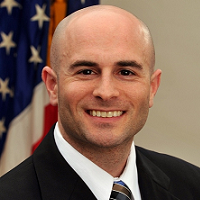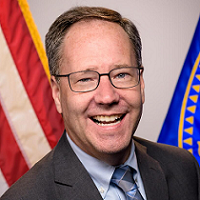
Steven Posnack, MS, MHS, Deputy National Coordinator for Health IT, ONC
LinkedIn: Steven Posnack
LinkedIn: ONC
James Macrae, MA, MPP, Ass. Admin., Bureau of Primary Health Care, HRSA
LinkedIn: HRSA

ONC’s USCDI+ program recently reached a milestone as part of a joint initiative started in August 2022 with the Health Resources and Services Administration (HRSA). HRSA and HRSA Health Center Program grantees launched one of the first real-world implementations using the Health Level 7 International (HL7®) Fast Healthcare Interoperability Resources (FHIR®) Bulk Data Access standard as part of a federal program.
The HRSA Health Center Program funds nearly 1,400 health centers, collectively operating over 15,000 service delivery sites. HRSA-funded health centers deliver affordable, accessible, high-quality, and cost-effective primary healthcare services to medically underserved communities in every U.S. state, U.S. territory, and the District of Columbia. Health centers use the Uniform Data System (UDS) to report on a core set of measures that evaluate the program’s operations and performance, and informs new approaches to quality improvement, innovation, and addressing social determinants of health, disparities, and other pressing needs.
ONC and HRSA are working together to improve UDS reporting
Health Center Program reporting for UDS involves numerous activities, including but not limited to chart audits, data extracts, and aggregation in multiple data formats. Many health centers find these processes time-consuming and involve multiple systems and users, adding hours of manual burden and shifting resources away from other work. ONC and HRSA recognize these challenges and are aligning the annual UDS reporting program with FHIR-based application programming interfaces (APIs) standards available in health IT certified through the ONC Health IT Certification Program.
ONC and HRSA worked together to develop the UDS+ FHIR Implementation Guide (USD+ FHIR IG). ONC also worked with HRSA’s UDS Test Cooperative (UTC), which consists of over 124 organizations. The UTC serves as a nationwide community of volunteer testers and implementers who provide feedback to tailor the UDS+ FHIR IG requirements to the needs of Health Center Program grantees. In April 2024, HRSA began accepting and receiving FHIR-enabled UDS de-identified patient-level submissions (UDS+). To date, HRSA has received UDS+ submissions from an initial cohort of HRSA-funded health centers representing 2.2 million patients from different parts of the country.
While in a proof-of-concept year, ONC wants to recognize HRSA’s achievement in standards-based API reporting with live data. This transition is the foundation for reducing the provider reporting burden and improving data quality.
UDS+ can improve outcomes, reduce burden and strengthen federal health IT coordination
This milestone is a shining example of HHS agencies working together to align and coordinate health IT-related activities to ensure that federal agencies and their partners operate as efficiently and cohesively as possible. Modernizing HRSA’s reporting technology will provide a fuller picture of health center patients’ needs to best target efforts to improve health outcomes and reduce health disparities, in addition to reducing reporting burdens for health center grantees. Looking ahead, UDS+ can be used to support even more quality improvement and innovation across the Health Center Program. Partnerships like this by ONC and HRSA represent the best of what coordinated activities across HHS can bring to the nation and high-need communities.
This article was originally published on the Health IT Buzz and is syndicated here with permission.
